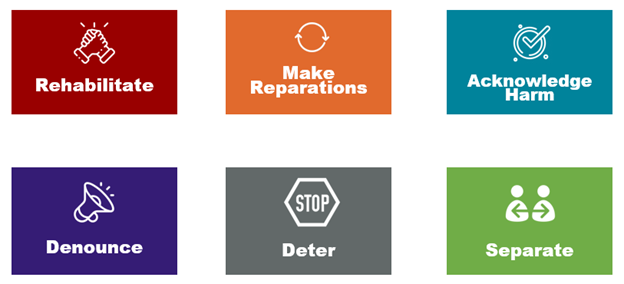A criminal sentence is a judge’s decision about how to punish someone guilty of a crime. Sentencing is the process that judges go through to make their decision. In a youth criminal case, the purpose of sentencing is to hold the youth accountable for their actions. The judge must ensure there are meaningful consequences for youth which support rehabilitation and reintegration into society.
Judges sentence youth by following a set of principles described in the YCJA. Judges must consider the principles of sentencing in the YCJA including in section 3, the Declaration of Principle and in section 38, Purposes and Principles of sentencing.
Criminal sentences must be proportional to the seriousness of the offence and to the degree of responsibility of the youth. This is an important point. Judges must consider. how bad was the crime? They also must consider, how responsible is the offender? A proportional sentence means that the punishment should fit the crime. Serious crime deserves a serious sentence. A less serious crime should get a lighter sentence.
Criminal sentences must be similar to other sentences for similar crime. For youth, a criminal sentence cannot be more severe than what an adult would get. Youth sentences must be the least restrictive option available to the judge. The sentence must be the best choice to help youth not commit more crime and be positive members of society. Sentences should promote a sense of responsibility in the guilty youth. They should also help the youth understand the harm that was done.
Goals of Criminal Sentencing
The illustration below shows the goals of criminal sentencing.

- Rehabilitate: Help the youth be a positive member of society
- Make reparations: Make up for the harm done
- Acknowledge harm: Understand the pain or damage done
- Denounce: Help the youth understand their actions were wrong
- Deter: Help the youth not commit more crime
- Separate: Remove the youth from being a danger to society
You have probably heard the expression: “If you do the crime, you do the time”. This relates to the connection between crime and going to jail. But for youth, being held in custody (in jail) is the last option that judges consider. The YCJA requires judges to consider all other punishments first before a youth is given a jail sentence. A youth sentence must be the least restrictive option.